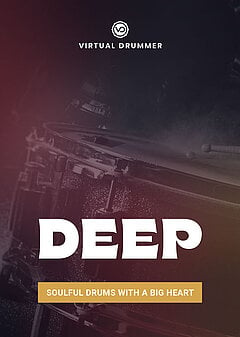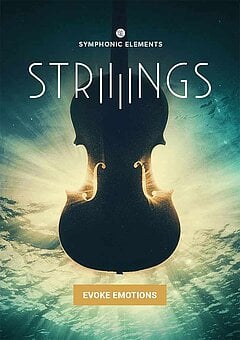6 Ways to Promote Your Music
How you can build relationships with your fans, expand into new audiences and have a sustainable and successful career in music production
FEBRUARY 7TH, 2021
Are you sitting in front of a finished track? Read this article to learn the 6 best ways of promoting your own music to build a successful career in music:
1. Social media posts
This may seem like an obvious choice, but most musicians — most artists and creators in general — don’t approach social media with a plan. If you only use your Facebook or Instagram page to announce that you created something new or have something for sale, the response will be dismal.
Social media is meant to be social — used for starting conversations, sharing experiences, and bringing people together from everywhere across the world. A post saying “My album is on sale for 20% off this weekend!” doesn’t start a conversation ... it tells people that you want something from them.
95% of the time, you should share and comment on things your audience cares about. If they love anime, share posts about new series coming out, offer your thoughts, and ask for theirs. If it’s sports or comic books, the same principles apply. The more conversations you start, whether serious or fun, the more people will see your posts (thanks to the way social media algorithms work). And given enough quality time with you, they’ll be more inclined to buy or even help you promote your stuff the 5% of the time or less that you’re actively promoting your music.
2. YouTube
Your video content doesn’t need to be fancy — in fact, there are channels that gained hundreds of thousands of followers only posting their music put to still images. For example, the producer Snail’s House did this almost exclusively for years with videos like this:
Music videos, lyric videos and the like definitely help, but don’t make that a priority if you aren’t already skilled in it. Start simple first, then later on you can collaborate with video creators to make something better.
People will come to your channel for the music — your sole job is to get them there and keep them listening. The more often people click on your videos and the higher a percentage of them that they watch, the more people YouTube will show your music to. There are several components to this:
- Video thumbnail (the static image that appears along with the video title) — you want this to grab their attention, whether through cool artwork, a short but compelling headline, or anything else that resonates with your target audience.
- Title — unless you’re already a well-known artist, do not simply write the song or album name. If you’re trying to capture listeners who love drumstep, include “Drumstep” in the title. Heck, you can even write something like “[Song Name] - 2021 Classic Drumstep Revival” — it’s relevant to the current year (if you’re reading this in 2021), it references the genre, and it targets people who miss “classic” drumstep and want to see it come back. That’s a very productive title!
- Video SEO — make sure you include the most relevant tags in your video metadata. Don’t just type in whatever you think people are searching for ... it’s more complicated than that. Brian Dean gives a great guide to this in his video here:
3. Spotify playlists
Spotify playlists are one of the best music discovery tools available, and you want to take advantage of them in every way you can. The more third party playlists your music is on, the more users will be able to hear it — if you use this strategically, you can get a ton of new listeners just by getting on several playlists. This strategy takes time, and you’ll see little to no results at the very beginning, but if you stay consistent, your listener base can grow dramatically.
The first step is to find playlists in your niche — if it’s neo soul, type “neo soul” in the search bar (we actually created a Spotify playlist just for this called Nu Soul by ujam!). See what playlists come up, and pick out a couple songs in each and find out if your music is similar enough that listeners of this playlist would enjoy it. If there’s a mismatch, move onto the next playlist (try different genres and subgenres too ... you might find that your music is closer to a different genre than you originally thought). Only settle on a playlist you genuinely believe your music would be a great fit for, and find the username — if it’s the person’s real name, you’re in luck! See if you can find them on any social media platforms and DM them, linking to a couple of your best songs and asking if they feel their audience would enjoy listening to your music on their playlist. Most won’t respond, but some will — and if you approach this from a desire to help their audience more so than to help yourself, you’ll have a lot more success.
4. Promotion channels
There are tons of channels on YouTube that only upload other people’s music — and if your music is similar to what they share and their subscriber count is above 10,000, it’s worth reaching out to them to see if they’d like to post a song of yours. Follow the above principles for getting on Spotify playlists: you’re there to help them provide a better experience for their listeners. Don’t fake this, because these channels get requests to promote their music all the time (even the smaller ones). Your desire to help their channel needs to be genuine, or they’ll see through it nearly every time.
This is a little more straightforward than Spotify, because most promotion channels mention a preferred way to reach out to them on their About page (email, Google Form, etc.). If they leave specific instructions on how to submit, label music files, title your email, etc., follow them — you’d be amazed at how many people don’t, so you instantly get a little boost of good will. People appreciate it when others listen, and some channels will throw out your submission just because the artist didn’t follow their guidelines — it makes the selection process much easier.
5. Collaborations
These are an amazing way to gain exposure with a new audience. You and your collaborator both have the opportunity to gain each others’ listener bases, and it could even make your music accessible to audiences in a related but different genre. When reaching out to potential collaborators, it’s a good idea to focus on producers who have a slightly larger following than yours — too large and you’re almost certain not to get a response. By this same principle, be open to it if a lesser known producer reaches out to you to collaborate — you still get exposure to their audience, and it helps them grow too. But in general, save your pitches for producers who are in a better position to help you grow.
In your message, focus on how getting exposure to your audience helps them. Also, are your styles similar? Do you have something personal in common? Use any similarities you can! Once you find a collaborator, read our article on How to Collaborate on Music Remotely — that will help set you up for a successful project and make the process easier and more fun.
6. Discord
Discord is a great tool once you have a decent following. If you’re just starting out, don’t worry about it yet — it’s not a tool for discovery, but for relationship-building and market research. You get to have faster, more personal text conversations with your listeners and get feedback on how to make music that better serves them. You can show works in progress, unfinished mixes, ask which album concepts they like, and that’s just a few in a long list. The info you glean from them will help you grow your fanbase faster, because you’ll learn how to speak to potential listeners in a more personal and targeted way, shortening the amount of time it takes for them to become true fans.
Your Discord following is also much likelier to buy from you as well because of the personal connection you’re building with them, and because there’s more buildup to each project you create. Post an invite link to your Discord server across all your social media channels, and write posts inviting people to it every now and then. Here’s a fun way to do this: take screenshots of fun conversations and color out the usernames to show listeners what they’re missing by not being on your server (just keep it light, don’t actually try to apply guilt!). You’ll be amazed at the info you gain by doing this, not to mention how fun it is to build a group of people that share your interests.
Wrapping up
There are countless ways to promote your music, and these are just a few of them. This is a gradual process, and 95% of your promotional efforts should be to build relationships, not make sales. Music and other creative fields are different than other industries because your product isn’t a necessity — it’s a way to enjoy more fulfillment in life. People rarely make impulse purchases on experiences when they don’t know much about them. Let them get to know you first, then make them an offer. You’ll grow much faster that way, and you’ll have a far more successful career in music.
Stay up to date
Sign up and we’ll send you an e-mail with product news and helpful stuff every now and then. You may unsubscribe at any time.
Defy Limits
We develop software solutions that enable people to create, consume and interact with music.



